News
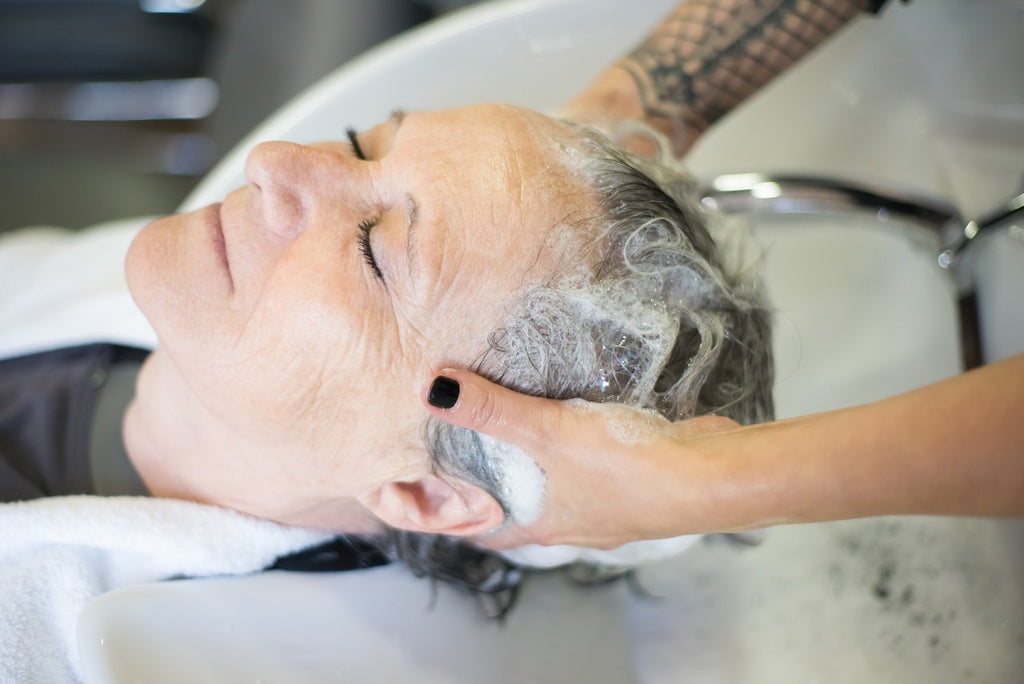
5 Frequently-Asked Questions People Have about Minoxidil
Hair loss is a common problem affecting millions worldwide, regardless of age, gender, or ethnicity. Various factors, including genetics, poor nutrition, stress, hormonal imbalances, and medical conditions like alopecia areata and thyroid disorders, can cause it.
However, there are several solutions available in the market. One such solution is minoxidil, a topical medication used to treat hair loss in both men and women. But which frequently-asked questions do people have about it? Here are some ideas.
1. Are the Results Immediate?
One of the most common questions about minoxidil is whether the results are immediate. The answer is no. While some people may see an improvement in their hair loss within a few weeks of using minoxidil, it can take up to six months or more to see significant results. Minoxidil promotes hair growth and slows hair loss, but it takes time for the hair follicles to respond to the medication.
2. How Long Until the Hair Grows?
Another frequently asked question is how long it takes for the hair to grow after using minoxidil. As mentioned, it can take up to six months or more to see significant results. However, the rate of hair growth can vary from person to person. Some people may experience faster hair growth, while others may take longer. It's essential to be patient and consistent with the use of minoxidil to see the best results.
3. How Do I Use the Product?
Minoxidil comes in different forms, such as foam or liquid, and it's essential to follow the instructions provided with the product carefully. The recommended dosage is to apply the medication to the scalp twice daily, once in the morning and once at night. Using the product regularly and consistently is essential to see the best results. Additionally, avoiding shampooing or washing your hair for at least four hours after applying minoxidil is recommended.
4. Can I Use It on Curly Hair?
People with curly hair may wonder if minoxidil is safe for their hair type. The good news is that minoxidil is safe for all hair types, including curly hair. However, it's important to note that the product may cause some dryness or flaking of the scalp, which can be more noticeable on curly hair. To avoid this, using a moisturizing conditioner regularly is recommended as avoiding using too much of the product at once.
5. Is It Safe to Use Everyday?
Another common concern about minoxidil is whether it's safe to use daily. The answer is yes. Minoxidil is safe to use daily if you follow the instructions provided with the product. However, avoiding using too much of the product at once or more frequently than recommended is essential, as this can lead to scalp irritation or other side effects.
Conclusion
In conclusion, minoxidil is a popular and effective solution for hair loss, but it's essential to be patient and consistent with its use. It may take up to six months or more to see significant results, and it is necessary to follow the instructions provided with the product carefully. Additionally, it's safe to use on all hair types, including curly hair, and it's safe every day as long as you use it as recommended. If you have any concerns or questions about using minoxidil, it's best to consult with a healthcare professional.
Tugain 10 aims to help people in their hair regrowth journey. Through our products, like Minoxidil 12.5 percent, our clients will experience growing back hair in no time. Learn more about the process by browsing our website today.
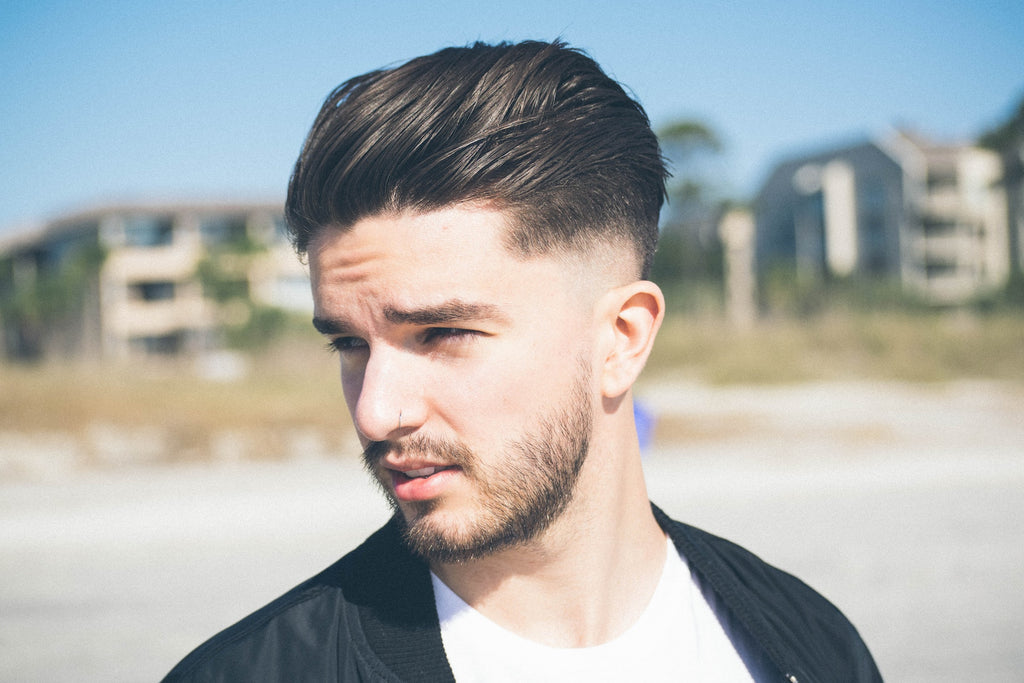
The Explanation: Beard Hair Loss in Brushing or Combing
Beard hair loss, also known as alopecia barbae, is a lesser-known yet common condition that affects numerous men across the globe. It is usually characterized by patchy hair loss in the beard area, sometimes accompanied by itching or burning sensations.
While it may cause a certain degree of distress and self-consciousness, it is essential to understand that beard hair loss is treatable. With the proper intervention and care, one can successfully manage and overcome this condition, restoring facial hair and confidence.
Why Does Combing or Brushing My Beard Cause Hair Loss?
Combining or brushing one's beard can sometimes lead to hair loss due to various factors.
The primary cause is the mechanical stress that combing or brushing applies to the hair shafts and follicles, which can weaken and break the hairs, leading to noticeable hair loss. Moreover, using a brush or comb with rough or sharp bristles can cause more damage to the hair shafts, increasing the likelihood of hair breakage.
Furthermore, improper grooming techniques, such as excessive force or brushing while the beard is wet, can also contribute to hair loss. Maintaining a gentle grooming routine, using a high-quality comb or brush with soft bristles, is essential to minimize hair loss and keep a healthy beard.
How to Prevent Beard Hair Loss When Brushing or Combing
Preventing beard hair loss when brushing or combing is essential to maintaining a full and healthy beard. To effectively minimize hair loss, following a few simple steps is crucial.
Firstly, always ensure your beard is clean and moisturized before brushing or combing, as dry and dirty hair is more prone to breakage. Use beard shampoo and conditioner specifically designed for facial hair to keep it nourished and easy to manage.
Secondly, invest in a high-quality beard brush or comb made from natural materials such as boar bristles or wooden teeth, as these are gentle on your hair and help distribute natural oils evenly. When brushing or combing, be gentle and start at the tips of your facial hair, working your way up to the roots to prevent unnecessary tugging and pulling.
Additionally, consider incorporating a beard oil or balm into your grooming routine, as these products can provide extra hydration and protection against breakage.
Following these steps and maintaining a consistent grooming routine can prevent facial hair loss and keep a solid and healthy beard.
Should You Worry about Beard Hair Loss When Brushing or Combing?
Beard hair loss while brushing or combing is a common concern for many men who take pride in their facial hair. However, it is essential to understand that losing a few strands of hair during this grooming process is normal and should not cause worry.
The hair growth cycle consists of shedding and regrowth, so losing hair during brushing or combing is part of the natural process. Additionally, using a high-quality beard brush or comb designed specifically for facial hair can help minimize breakage and ensure that you are not causing unnecessary damage to your facial hair.
So, while it is normal to experience some beard hair loss during grooming, it is essential to maintain proper care and utilize the appropriate tools to keep your facial hair looking its best.
Conclusion
It is evident that assimilating and analyzing information from various sources is crucial to understand any subject matter comprehensively. The process of concluding involves evaluating evidence, identifying patterns, and synthesizing the key points to create a coherent and insightful summary. This helps reinforce the knowledge gained and aids in effective communication and decision-making. Furthermore, a well-rounded conclusion is a testament to an individual's critical thinking and analytical skills, essential assets in today's rapidly evolving world.
Tugain 10 has proven to be the best product for beard hair growth in the market today. Its active ingredient, minoxidil, has helped countless men achieve fuller and thicker beards. Our product is easy to use, affordable, and has minimal side effects. Tugain 10 is a safe and effective solution for anyone looking to enhance their beard hair growth. Don't hesitate to try it out today and see its remarkable difference in handling beard hair loss problems.
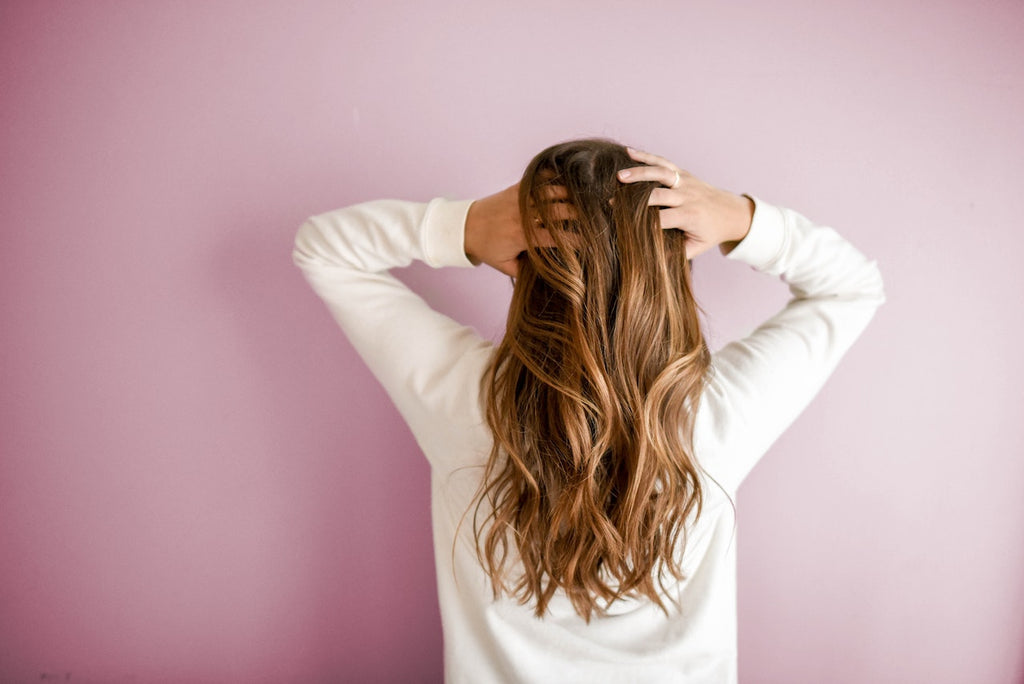
Radiate Confidence: Managing Your Hair Loss Gracefully
Millions of individuals worldwide struggle with hair loss, which is a widespread issue. Many factors, such as heredity, aging, stress, and medical disorders, might contribute to it.
Although hair loss might be upsetting, there are numerous confident and gracious ways to handle it. The following sections provide you with some tips on how to radiate confidence and manage your hair loss gracefully.
Understanding Hair Loss
Before diving into the tips, it is important to understand the different types of hair loss. Male and female pattern baldness, telogen effluvium, and alopecia areata are only a few of the several types of hair loss.
Each kind of hair loss has its own causes and symptoms. Therefore, it is vital to know which type of hair loss you are experiencing and seek professional advice from a dermatologist.
Tips for Managing Hair Loss
1. Get a Haircut
One of the easiest ways to manage hair loss is by getting a haircut. A shorter hairstyle can help to make your hair appear fuller and thicker. Avoid hairstyles that require a lot of maintenance or styling, as this can put unnecessary stress on your hair and scalp.
2. Use Hair Accessories
Hair accessories, such as hats, scarves, and hairpieces, can be a great way to manage hair loss. They can add a touch of style to your look while covering any areas of hair loss. Experiment with different styles and accessories to find what works best for you.
3. Embrace Your Natural Hair
A great strategy for managing hair loss is to embrace your natural hair. You might wish to embrace your hair's natural texture if it is curly or wavy by using curl-enhancing products.
If you have straight hair, consider using volumizing products that add fullness and body to your hair.
4. Try Hair Growth Products
There are many hair growth products on the market that claim to help promote hair growth. It's vital to keep in mind that not all hair growth products are made equal, even though certain ones may work for some individuals.
Consult with a dermatologist before trying any hair growth products to ensure they are safe and effective.
5. Seek Professional Help
If your hair loss is upsetting you, you might want to consider getting expert assistance. A dermatologist can identify the root of your hair loss and suggest the best course of action.
A therapist can also help you to cope with the emotional impact of hair loss and improve your self-esteem.
6. Practice Self-Care
Managing hair loss can be overwhelming, so it is important to practice self-care. Take time each day to do something that makes you feel good, whether it be exercising, meditating, or spending time with loved ones.
Taking care of your overall well-being can help to improve your confidence and outlook on life.
Conclusion
Managing hair loss gracefully is a challenge for many individuals. However, with the right attitude and strategies, it is possible to radiate confidence and embrace the change.
It is important to seek professional help, do research, and find the most suitable solutions for your individual situation. With the right treatments and styling, you can look and feel your best.
Ultimately, it is important to remember that hair loss is a natural part of life and that you should take comfort in knowing that you are not alone.
Tugain 10 offers quality minoxidil 10 solution for hair regrowth! We provide 12.5% Minoxidil and Tugain 10% Liquid and Tugain Foam 10% products. Check out our catalog today!
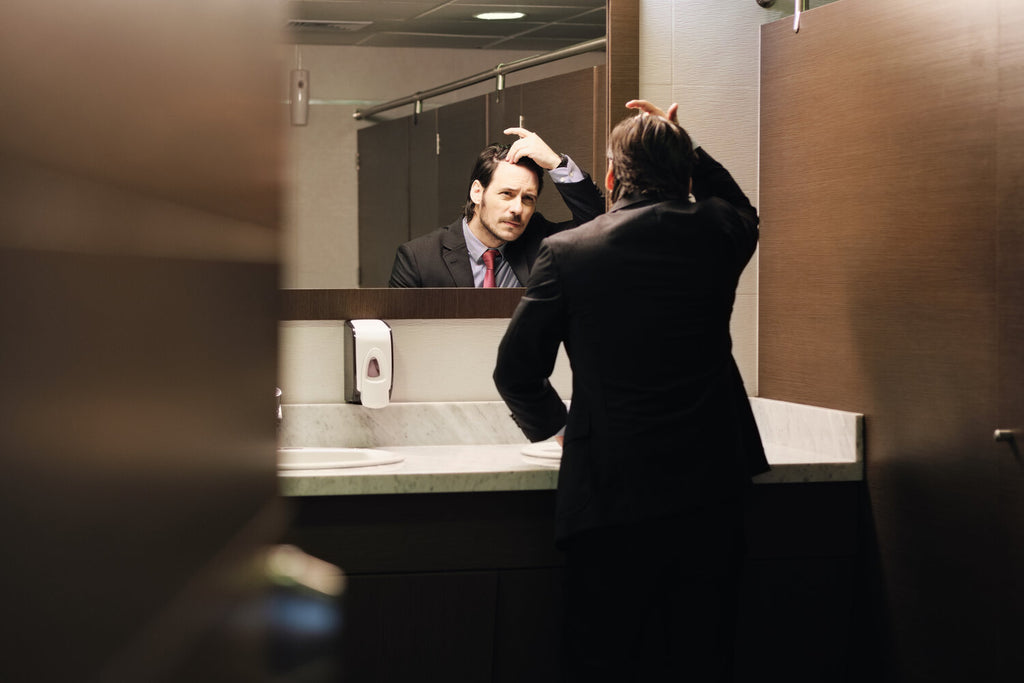
Unpacking the Negative Effects of Hair Loss on Men’s Well-Being
Hair loss is a common problem that affects millions of people worldwide. It is more common in men than in women, and it can have a significant impact on both their appearance and confidence. Hair loss can result in various negative emotions, including anxiety, depression, and low self-esteem. This article will explore how hair loss can affect men's appearance and confidence.
1. Appearance
Hair loss can significantly change a man's appearance. Men who experience it may notice that their hairline recedes, and their hair becomes thinner and less dense. This can make them look older than their actual age and affect their facial features. For example, men with a prominent forehead may feel self-conscious about their appearance when their hairline recedes.
Hair loss can also affect the way men style their hair. Men with thinning hair may find it difficult to style their hair to hide their bald spots. They may also need to use more hair products to make their hair appear thicker. This can be time-consuming and expensive, leading to further loss due to the chemicals in the hair products.
2. Confidence
Hair loss can have a significant impact on a man's confidence. Men who experience hair loss may feel less attractive and less confident. They may avoid social situations or activities that require them to expose their bald spots. They may also avoid dating or forming romantic relationships because they feel their lack of hair makes them less attractive.
Hair loss can also affect a man's self-esteem. Men who experience hair loss may feel that they are losing a part of their identity. They may feel less masculine or less virile, which can lead to feelings of inadequacy and depression. It can also affect a man's professional life. Men who feel less confident in their appearance may be less likely to pursue job opportunities or promotions.
3. Mental Health
Hair loss can also have a negative impact on a man's mental health. Men who experience hair loss may feel anxious, depressed, and stressed about their appearance. They may also experience low self-esteem and feelings of worthlessness. These negative emotions can significantly impact a man's mental health and well-being.
Treatment Options
There are several treatment options available for men who experience hair loss. One of the most popular options is hair transplant surgery. This involves transplanting hair from one area of the scalp to another. Hair transplant surgery results can be very successful and restore a man's confidence in his appearance.
Another treatment option is medication. Minoxidil is a highly effective medication that promotes hair growth in individuals suffering from hair loss. It is a topical solution that increases blood flow to the hair follicles, stimulating hair growth.
Minoxidil has been approved by the FDA and has been clinically proven effective in promoting hair growth. It is available over the counter and can be used by both men and women. However, it is important to note that results may vary from person to person, and consistent use is necessary to achieve the desired results.
Conclusion
Hair loss can significantly impact a man's appearance and confidence. It can make them feel less attractive, less masculine, and less confident in their appearance. However, there are several treatment options available that can help to restore a man's confidence in his appearance. If you are experiencing hair loss, it is important to speak with a healthcare professional to determine the best course of treatment for you.
Do you need help dealing with hair loss? Tugain 10 got what you need. We can supply you with the most effective hair products that can help combat hair loss. Browse our shop today!

Minoxidil Liquid and Foam Which One is Best for You
When it comes to hair loss treatments, one of the most popular options available is minoxidil. Minoxidil is available in both liquid and foam form, and many people struggle to decide which one is best for them. In this article, we’ll take a look at the pros and cons of each, so you can make an informed decision about which one is right for you.
What is Minoxidil For?
Minoxidil is a medication that is used to treat a variety of medical conditions, most commonly to help with hair growth and male pattern baldness. It is a topical solution that is applied directly to the scalp and is known to be effective in stimulating new hair growth. Minoxidil was initially developed as a treatment for high blood pressure and it was discovered that one of the side effects of the drug was increased hair growth. This discovery led to the development of Minoxidil as a hair growth treatment.
What is Liquid Minoxidil?
First, let’s take a look at the liquid form of minoxidil. The liquid form is typically applied directly to the scalp with a dropper or spray bottle. It is often easier to apply and dries quickly, so it is ideal for people who want a quick and easy application process. Additionally, the liquid form of minoxidil is often more affordable than the foam form.
However, the liquid form of minoxidil is not without its drawbacks. It is important to take extra care when applying the liquid form, as it can be messy and difficult to control. Additionally, the liquid form of minoxidil can cause skin irritation, so it is important to take extra precautions when applying it.
What is Foam Minoxidil?
Now let’s take a look at the foam form of minoxidil. The foam form of minoxidil is applied directly to the scalp with a foam applicator, and it is easy to control and apply. Additionally, the foam form of minoxidil does not require as much precision as the liquid form does, so it is ideal for people who do not want to take extra care when applying the treatment. The foam form of minoxidil is also less likely to cause skin irritation, so it is ideal for people with sensitive skin.
However, the foam form of minoxidil can be more expensive than the liquid form, and it takes longer to dry. Additionally, the foam form of minoxidil may not be as effective as the liquid form in some cases.
Conclusion
In the end, it is up to you to decide which form of minoxidil is best for you. Both forms are effective in treating hair loss and promoting hair regrowth, so it really comes down to personal preference. If you are looking for faster results, then the liquid form of minoxidil may be best. However, if you prefer a cleaner and easier application process, then the foam form of minoxidil may be a better choice. Whichever form you choose, just make sure to follow the instructions on the label and consult your doctor if you have any questions.
Are you looking for minoxidil foam? If you need help with dealing with hair loss, then you’ve come to the right place. Tugain 10 can supply you with the most effective hair growth products that will help you combat hair loss. If you need more on these products, be sure to visit our website today!
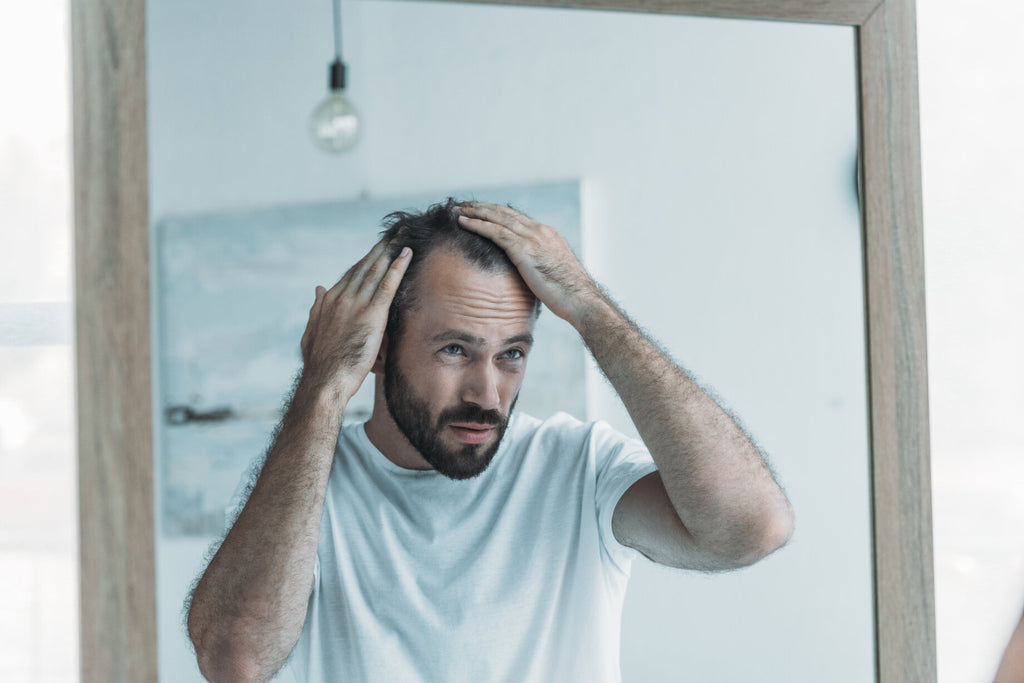
Minoxidil for Hair Loss Among Men–Incredible Benefits
Male pattern baldness is a widespread disorder that impacts a lot of males globally. It is characterized by a receding hairline, thinning hair on the crown and temples, and eventually total baldness. Fortunately, several treatments are available to treat this condition, one of the most popular being Minoxidil.
Two FDA-approved medications can be used to treat hair loss in the 35 million American males who have male pattern baldness. Among them is Minoxidil.
The medication, available as a topical solution or foam, can treat Androgenetic alopecia, often known as male pattern baldness, in some men. Minoxidil (Rogaine) may even promote new hair growth if you're lucky. The key is to start using it as soon as you notice hair loss and continue doing so to maintain the results.
Benefits of Minoxidil
Hair loss is a prevalent problem for men, especially as they age. While many treatments are available, Minoxidil is one of the most popular and effective. This medication has been used for decades to treat male pattern baldness and is available in both a foam and a liquid solution.
Minoxidil is a vasodilator that widens the blood vessels and increases blood flow to the scalp. This increased blood flow helps to stimulate the follicles, which in turn encourages hair growth. It is thought that Minoxidil works by increasing the levels of potassium in the scalp, which helps to stimulate the growth of new hair.
Minoxidil is easy to use and can be applied directly to the areas of the scalp that are affected by hair loss. It is most effective when used twice a day, with the liquid version applied in the morning and the foam version applied at night. Minoxidil is also available in a topical solution. The topical solution is applied directly to the scalp, usually with a cotton bud, and is absorbed into the skin.
One of Minoxidil's main benefits is its relatively safe treatment for male hair loss. Unlike other treatments, it does not involve surgery or hormones and has few side effects. Minoxidil can be used on its own or in combination with other treatments.
Another benefit of Minoxidil is that it is relatively affordable. It is available over the counter in many countries, meaning it is unnecessary to get a prescription. Minoxidil is an attractive option for those who wish to try an effective treatment for male hair loss without spending too much money.
The most vital thing to remember is that Minoxidil is not a miracle cure. It is important to remember that it can take several months for the effects of 12.5% Minoxidil and Tugain 10 to be noticeable. It is also important to continue using the medication as directed, as ceasing the treatment can cause the hair to start falling out again.
Conclusion
Minoxidil is an effective non-surgical treatment for male hair loss. It is a topical solution that helps overcome this common problem without needing expensive and potentially dangerous surgical procedures. Not only does it encourage hair growth, but it also helps to thicken existing hair, preventing further hair loss. It is also an affordable and widely available option, making it a great choice for those suffering from male hair loss.
Get 12.5% Minoxidil and Tugain 10% Liquid and Tugain Foam 10% products here. Contact Tugain 10 today!
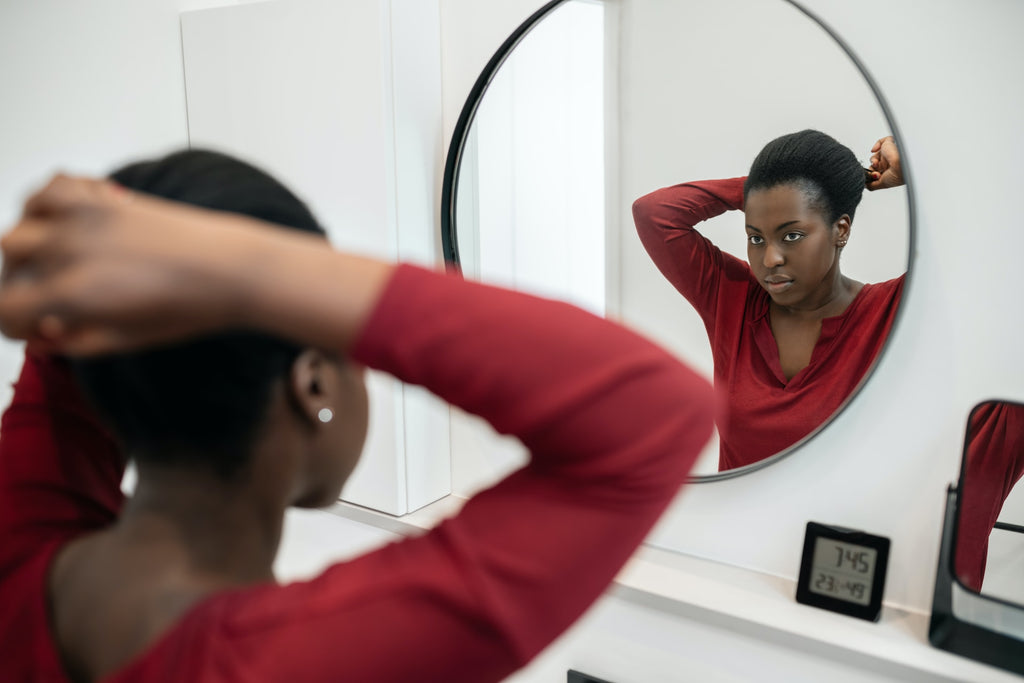
Bothered by Your Receding Hairline? Why Not Try Minoxidil?
If you've seen a receding hairline and other early indicators of baldness, you might have researched treatments like minoxidil.
Minoxidil is an over-the-counter (OTC) drug used to treat and prevent pattern hair loss by reducing hair shedding. It comes in a solution and a foam, both of which are formulated to be applied directly to the areas of your scalp where hair loss is most evident.
Scientific studies have shown that minoxidil, like finasteride, can help men with male pattern baldness restore "lost" hair.
The effectiveness of minoxidil on hairs at the hairline, however, has been the subject of significant online controversy. The FDA clearance process primarily focused on the top of the scalp and crown, leading to the widespread notion that this is the sole location where minoxidil will be effective.
Despite this, many studies show that minoxidil can stimulate hair growth across the entire scalp, including the frontal bald spot.
In this article, we will look into the science behind minoxidil to explain how it works, why it is beneficial, and why it is worth considering if your hairline is beginning to thin and recede.
First of All, What Is Minoxidil, and How Does It Work?
To put it simply, minoxidil is a topical treatment for thinning hair. Vasodilators, of which this is a member, widen blood arteries and increase systemic blood flow.
Even though minoxidil's exact mechanism of action is not fully known, it is thought that when this medication is administered to the scalp as a solution, it interacts with sulfotransferases, becoming an active minoxidil sulfate.
Minoxidil then shifts your hair follicles into an active development stage called the anagen phase, which prevents them from entering the resting and shedding phase of the natural hair growth cycle.
The anagen phase of each hair follicle may be prolonged with minoxidil, resulting in longer and larger average hair diameter.
Androgenetic alopecia, which can lead to male pattern baldness, is caused by the male sex hormone dihydrotestosterone (DHT) binding to receptors in your scalp and causing hair follicles to shrink.
As opposed to the pharmaceutical drug finasteride, which treats male pattern baldness by decreasing DHT levels throughout the body, minoxidil has no effect on DHT production or any other hormones.
You can raise your hair count and stimulate new growth from the scalp up with the help of minoxidil solution or foam.
Minoxidil also works locally on the scalp to stimulate hair growth, while finasteride acts systemically to prevent DHT from damaging hair follicles.
It's a frequent misunderstanding that minoxidil has no effect anywhere other than the crown and the scalp.
However, there is widespread misinformation that minoxidil is ineffective for treating and preventing frontal baldness, which occurs when hair begins to thin out at the crown.
Can a Receding Hairline Be Prevented with Minoxidil?
Short answer: yes! After using minoxidil for a few months, many men report seeing new hair growth and a denser, thicker hairline.
Your hairline's hair follicles aren't all that different from the hair follicles on the rest of your scalp or on your crown, so you can use minoxidil there and still get the full benefits.
Many men with thinning hair or a receding hairline have reported positive results from using minoxidil, and these reports corroborate the findings of the studies cited above.
However, it is crucial to remember that the scientific study on minoxidil as a treatment for frontal hair loss is not as thorough as the research on its effectiveness as a cure for hair loss on the crown.
Consider any new hair that sprouts along your hairline a pleasant side effect of utilizing minoxidil rather than the drug's primary purpose.
Conclusion
Indeed, minoxidil is a very effective treatment for those bothered by their receding hairline. It is a topical solution that is applied directly to the scalp twice a day for maximum results. It is easy to use and has few side effects, making it a safe and reliable treatment for baldness.
Additionally, it can be used in conjunction with other treatments such as hair transplants, laser therapy, and finasteride to create a comprehensive hair loss solution.
If you are looking for a trusted source of minoxidil products online, look no further than our amazing selections here at Tugain 10. We offer a wide range of hair products that are sure to bring back the normal growth of your hair. Check out our online store for more of our minoxidil selections and their prices.
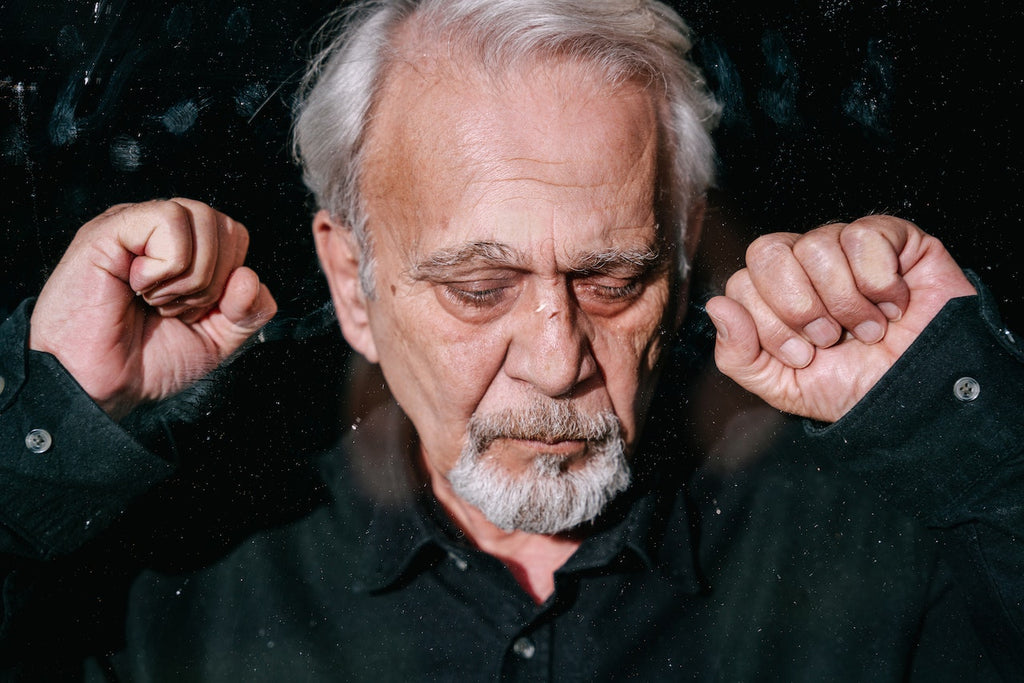
Everything That You Need to Know About Men’s Hair Loss
Hair loss is a common problem for men, and it can be a source of great frustration and insecurity. It is important to understand the causes of men's hair loss in order to address it better. To make things easier for you, this article will provide an overview of the causes of men's hair loss and offer advice on how to best treat it.
What Causes Hair Loss for Men?
The most common cause of hair loss in men is male pattern baldness, also known as androgenic alopecia. This is a genetic condition that is passed down from the mother’s side of the family. It is caused by the hormone dihydrotestosterone (DHT) which is present in higher levels in men. DHT can bind to receptors on the scalp, causing the hair follicles to shrink and eventually stop producing hair.
Other factors that can contribute to hair loss in men include stress, nutrition, certain medications, and medical conditions. Stress can lead to a condition called telogen effluvium, where the hair follicles enter a resting phase and begin to shed. Poor nutrition can result in inadequate nutrient levels for the hair follicles, leading to thinning. Certain medications, such as those used to treat high blood pressure, depression, and gout, can also cause hair loss. Medical conditions, such as thyroid disease, anemia, and scalp infections, can also cause hair loss in men.
What Are the Common Signs of Hair Loss for Men?
One of the most common signs of hair loss in men is a receding hairline. This occurs when the hairline begins to move backwards, creating an "M" shape on the forehead. As the hairline recedes further, the forehead may become larger and more noticeable. In some cases, a bald spot may also appear at the crown of the head where the hair parts.
Thinning hair is another common sign of hair loss. This occurs when the hair becomes thinner and weaker, which can be seen as less volume or smaller strands. This can occur in specific areas of the scalp, such as the temples or the crown, or it can be more widespread. In some cases, the thinning hair may progress to complete baldness.
Another sign of hair loss is excessive shedding. This is when the hair begins to fall out in larger amounts than usual, such as when brushing or combing the hair. In some cases, this excessive shedding may progress to baldness.
What's the Best Way to Deal with Hair Loss for Men?
First, it’s important to understand the causes of hair loss. Genetic predisposition is the most common cause of hair loss in men. Other potential causes include hormonal changes, stress, nutritional deficiencies, and certain medications. Knowing the underlying cause of hair loss can help determine the best treatment.
Once the cause of hair loss is identified, the best way to deal with it will depend on the individual’s needs. For some men, simply making changes to their lifestyle and diet may be enough to slow down or even stop their hair loss. Eating a balanced diet filled with essential vitamins and minerals can help to ensure the body has the nutrients it needs to promote healthy hair growth. Additionally, reducing stress and getting enough sleep can help to minimize hair loss.
If lifestyle and diet changes don’t work, there are several medical treatments available to help with hair loss. These treatments include minoxidil, finasteride, and platelet-rich plasma therapy. Minoxidil is a topical solution that is applied directly to the scalp and can help to stimulate hair growth. Finasteride is a medication that is taken orally and helps to reduce the production of DHT, a hormone that can cause hair loss. Finally, platelet-rich plasma therapy is a procedure where a patient’s own blood is used to inject growth factors into the scalp. This can help to stimulate hair growth.
Finally, for men who are not interested in medical treatments, there are several cosmetic procedures available. Hair transplants, for example, can help to restore a full head of hair. Other options include scalp micropigmentation and hair fibers, which can help to give the appearance of a fuller head of hair.
Conclusion
As you can see, there are several ways to deal with hair loss for men. It’s important to identify the underlying cause of the hair loss in order to determine the best treatment. For some, lifestyle and diet changes may be enough to slow down or stop their hair loss. If not, there are several medical treatments and cosmetic procedures available to help.
If you need help with dealing with hair loss, then you’ve come to the right place. Tugain 10 can supply you with the most effectivehair growth products that will help you combat hair loss. If you need more on these products, be sure to visit our website today!
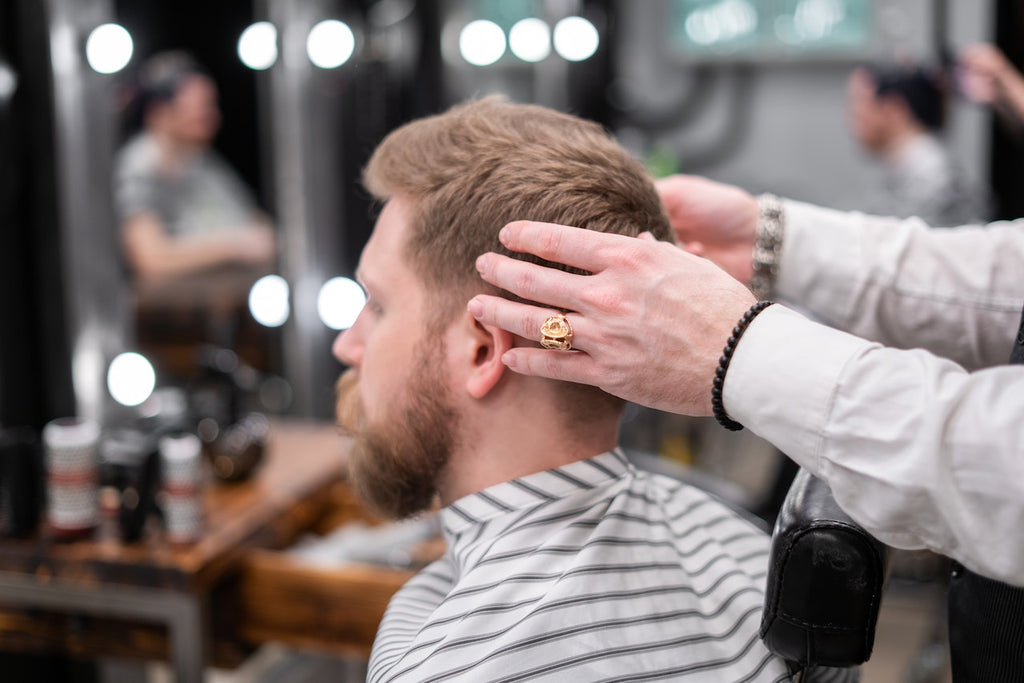
Does Minoxidil Cause Dandruff, and If So, How Do I Treat It?
Minoxidil is a medication that is commonly used to treat hair loss. It was first approved by the U.S. Food and Drug Administration (FDA) in 1988 and is sold as a topical solution or foam that is applied directly to the scalp. It is available over the counter (OTC) and is also prescribed by some doctors.
Minoxidil works by increasing blood flow to the hair follicles and stimulating hair growth. It is believed to work by increasing the size of the hair follicle, which allows for more hair growth. It is most effective when used in combination with other hair loss treatments such as medication, laser therapy, and nutrition.
That being said, for those that have been using minoxidil for a while, one thing they may have noticed is the increase in dandruff issues. Does minoxidil cause dandruff, and if so, how can one deal with it? These two questions are what we'll be answering today:
Does Minoxidil Cause Dandruff?
Before we discuss if minoxidil causes dandruff, let's first talk about what dandruff is and what normally causes it.
Dandruff is a scalp condition that causes flaking, itching, and irritation. It is caused by a combination of factors, including dry skin, fungal infections, and irritation from certain ingredients in hair products.
Now, let's take a look at the link between minoxidil and dandruff. Unfortunately, there is not a lot of research on the topic. However, some studies suggest that minoxidil can contribute to dandruff in some cases. Minoxidil can cause dry skin, which is one of the main causes of dandruff. Additionally, some people may be sensitive to the ingredients in minoxidil, which can cause irritation and lead to dandruff.
Ultimately, the link between minoxidil and dandruff is not fully understood. It is possible that minoxidil can contribute to dandruff, but more research is needed to determine the exact extent of this effect. If you are using minoxidil and have dandruff, it is best to speak to your doctor. They can help you determine if the dandruff is caused by minoxidil or something else. Additionally, they may be able to suggest alternative treatments or recommend other hair loss medications that are less likely to cause dandruff.
How Do I Treat Dandruff Caused by Minoxidil?
There are several treatments available to help treat dandruff caused by minoxidil. These include:
1. Switching to an Alternate Medication
If you're using minoxidil to treat hair loss, you may want to consider switching to an alternate medication. There are other medications available that can help to stimulate hair growth without causing dandruff.
2. Treating the Underlying Cause
If you're using minoxidil and still experiencing dandruff, you should talk to your doctor about treating the underlying cause. Your doctor may prescribe an antifungal medication to help eliminate the yeast-like fungus that's causing dandruff.
3. Applying an Anti-dandruff Shampoo
There are many anti-dandruff shampoos available that can help to reduce dandruff. Look for a shampoo that contains pyrithione zinc, ketoconazole, or selenium sulfide, as these are all common active ingredients that can help to reduce dandruff.
4. Trying Natural Remedies
There are also several natural remedies that may help to reduce dandruff. These include applying tea tree oil, apple cider vinegar, or coconut oil to the scalp.
It's important to note that dandruff caused by minoxidil can take several weeks to go away, even with treatment. In the meantime, it's important to keep your scalp clean and dry, as this can help to reduce the symptoms of dandruff.
Conclusion
All in all, while dandruff and minoxidil aren't fully connected yet, the fact of the matter is that many people believe minoxidil causes it. Fortunately, even if it does, there are many ways to counteract dandruff. Everything from using an anti-dandruff shampoo to even keeping your scalp clean and dry can help reduce dandruff, allowing you to enjoy the benefits of hair regrowth thanks to minoxidil!
Tugain 10 offers air products that help individuals enjoy healthier and more hair. If you are looking to buy expertly-formulated hair growth products, check out what we offer!

Does Using Minoxidil Constantly Ensure Permanent Hair Growth?
Similar to other ointments, oils, and topical treatments, consistently using minoxidil should ensure permanent hair growth. As hair growth relies on the effects of the drug, persistence, and patience should provide steady growth through continued use.
However, aside from using Minoxidil consistency, other factors may affect hair growth in patients. But which other things should first-time Minoxidil users know before using the wonder drug for quick and easy hair growth? Here are some ideas.
1. When Should I Start Using Minoxidil?
Hair loss is a condition that affects millions of people each year. Sometimes, it can be an embarrassing and frustrating issue that can affect a person’s self-esteem and confidence. Ideally, minoxidil should be used as soon as you notice thinning or balding.
While it’s best to begin treatment early, it can still be effective for patients with more advanced hair loss. Minoxidil stimulates blood flow to the scalp and encourages hair follicles to enter the growth phase, helping to thicken existing hair and promote new hair growth.
2. When Do I Start Seeing Results?
Results from minoxidil use can vary from person to person. Generally, results can be seen anywhere as early as eight weeks but up to 16 weeks after beginning treatment. However, since all people differ from each other, users may see results sooner or later.
It’s essential to be patient and consistent with your treatment. Minoxidil works best when used twice daily, every day. Don't give up if you don’t see results within the first few weeks, as it can take time for the product to work. Remember that consistency and persistence is essential.
3. How Do I Maximize Minoxidil Treatment?
It is essential to use Minoxidil consistently and correctly to maximize its results. Follow the instructions that come with the product, including the frequency and amount of the product. However, consult first with an expert and ask if it is the best solution for your hair loss.
Minoxidil works best when used twice daily, every day. Skipping days or weeks can reduce the effectiveness of the product. It is also essential to use the product on a clean scalp. Make sure to wash your hair and scalp with a gentle shampoo before applying minoxidil.
4. Is it Safe to Use Minoxidil Long-Term?
Yes, it is safe to use minoxidil long-term. However, talking to your doctor before starting a minoxidil treatment is essential. Some people may experience side effects such as skin irritation, scalp dryness, and dandruff.
If these side effects occur, it is essential to stop using the product and consult with a doctor for them to suggest another way to alleviate hair loss. It is important to remember that hair loss treatments can be effective, but overall health matters more.
5. Can I Use Minoxidil on Other Body Parts?
Minoxidil is only FDA-approved to be used on the scalp, as using it on other body parts can cause skin irritation and other side effects. If you are considering using minoxidil in other areas, it is best to consult a doctor first.
Conclusion
Minoxidil is a medication used to treat hair loss, available in topical and oral forms. While it is generally safe and effective, it can cause some side effects, such as irritation, itching, and dryness. It is essential to consult with a doctor before using minoxidil and follow the product label instructions carefully.
Tugain 10 aims to provide solutions to faster beard growth. Our 10 percent Minoxidil products aim to help men keep their luscious hair thick and growing no matter which hair fall factors affect them. Shop on our website and buy Minoxidil products today.
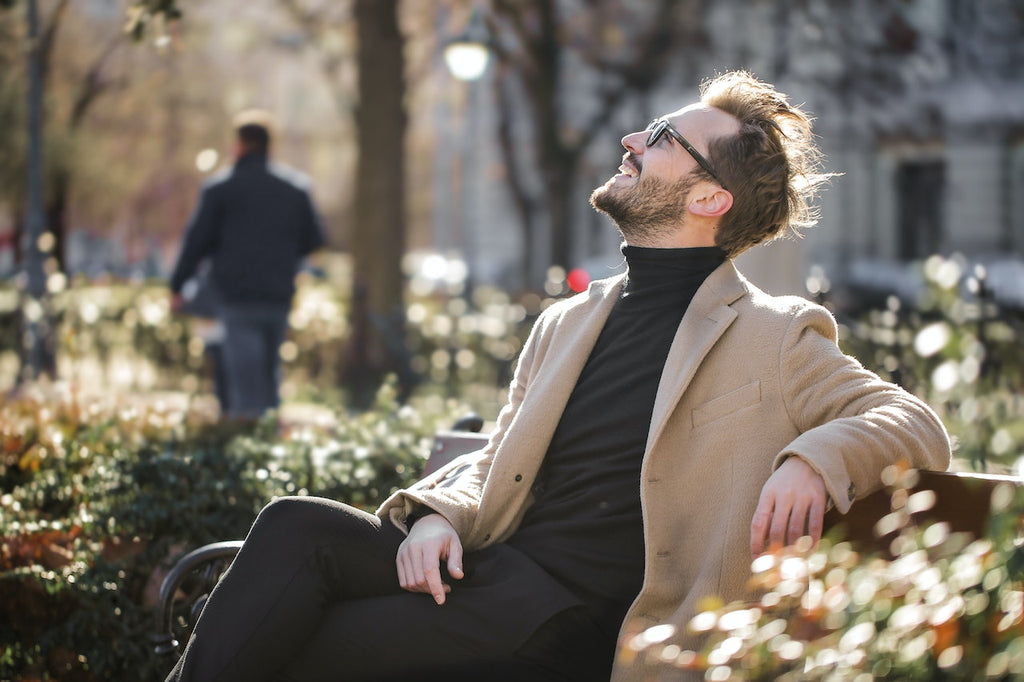
A Comprehensive Men’s Guide to Minoxidil Scalp Preparations
The most typical type of hair loss that many men experience at some point is male pattern baldness. The illness is also known as androgenetic alopecia. It is brought on by a confluence of hormonal and genetic variables.
In hair follicles, hair is produced. Each hair follicle typically produces one hair every three years. A new hair then emerges from the follicle after it is shed. Affected hair follicles eventually shrink in size as balding progresses.
The hair that develops is thinner and sheds more rapidly than it did previously. A considerably smaller hair follicle and thin hair that doesn’t reach the skin’s surface are the final results of this.
This natural aging process can be upsetting for some men, especially if it happens too quickly or too early in life. Some men may benefit from treatment with a minoxidil product applied topically to stop additional hair loss.
The effectiveness of the treatment is only sustained for the duration that the preparation is used, and its exact mechanism is unknown.
Below are useful instructions for minoxidil scalp preparations.
Step 1
Read the printed manufacturer information leaflet from the package before you begin the treatment. It will offer you additional information about minoxidil and a comprehensive list of potential adverse effects.
Step 2
Before you use minoxidil, ensure your hair and scalp are dry. The recommended interval between shampooing your hair and using the preparation is one hour.
Step 3
There will be applicators (spray pump and extended spray-tip) within the bag if you’re using minoxidil solution. An additional extended spray-tip is required for applying the solution to tiny areas rather than the spray-pump applicator for big areas.
A 1 ml dose is released by the pump after six sprays. After each spray, use your fingers to rub the solution into your scalp gently. Apply 1 ml (six spray pumps) twice daily, ideally in the morning and evening.
To prevent the solution from touching other parts of your skin or other persons, wash your hands immediately after applying it.
Step 4
Apply 1 g (half a capful) of minoxidil foam to the afflicted area of your scalp twice a day (morning and evening). Turn the can on its side and point the nozzle into your hand to accomplish this.
When you have enough foam in your hand to fill half a cap, press the nozzle. Gently massage the foam into the area of your head where hair is missing using your fingertips.
To prevent the foam from touching other parts of your skin or other persons, wash your hands immediately after applying it.
Step 5
Do not worry if you forget to apply your minoxidil preparation at the scheduled time; simply do it when it is next due. Do not apply twice to make up for a missed application; only use the appropriate amount.
Conclusion
Minoxidil scalp preparations are an effective and safe way to help promote hair growth and prevent baldness. It is important to use the product correctly and follow the instructions to ensure the best possible results.
Additionally, it is important to ensure that the scalp is properly prepared before applying the product to ensure that the product can penetrate the scalp and provide maximum benefits.
It is also crucial to speak with a doctor before beginning treatment with Minoxidil, especially if there are any known allergies or health conditions.
You can turn to Tugain 10 if you’ve decided to use minoxidil to regrow hair! We sell 12.5% Minoxidil, Tugain 10% Liquid, and Tugain Foam 10% products. Check out our hair growth products today!

Hair Care 101: The Basics of Getting a Safe Hair Treatment
Our hair is considered our "crowning glory" for a reason, and our hair can say a lot about our personal style and who we are as a person. For this reason, many people go the extra mile to ensure their hair looks good, even if it takes time or money. There are many ways of doing this, but one of the easiest ways is by dyeing your hair.
Applying hair dye is a straightforward process because you can do it at home, and it requires only a few basic supplies. Once everything is prepared, all it takes is getting a soft brush and applying it to your hair. However, this can be confusing for a beginner, especially since risks are involved if you don't know how to do it correctly. For this reason, we'll guide you on how to do it in this article.
What to Expect When Dyeing Your Hair
When dyeing your hair, you should expect your hair to look dry and brittle. This is normal because the dye can strip away natural oils, but don't worry, as it will be restored once you start using conditioners. You should also expect your hair to be darker than your chosen color. This is because the pigment from the hair dye gets absorbed deep into the hair shaft, and it will take a few days for the color to settle completely.
How to Prepare for Dyeing Your Hair
Before you start dyeing your hair, there are a few things you need to do to prepare. First, you should read the instructions on the box or bottle of dye and make sure you understand them. You should also ensure that you have all the necessary tools and supplies, such as gloves, a brush, and a timer.
Once everything is ready, you should wash your hair with shampoo and apply a deep conditioner to ensure your hair is hydrated and healthy. After that, you should let your hair air dry or use a blow dryer in a cool setting.
Applying Hair Dye
Once your hair is prepped and ready, the next step is to apply the dye. Start by dividing your hair into four parts and each into smaller sections. Put on the gloves and use the brush to apply the dye to the roots of each section. Use the brush to spread the dye evenly and avoid clumps.
Once you've applied the dye to all the sections, you should use the timer to track how long you need to leave the dye in your hair. When the time is up, rinse your hair with cool water until the water runs clear. Finally, use a conditioner to lock in the color and make your hair look healthy.
Can Hair Dye Damage Your Hair?
Yes, hair dye can damage your hair if it's not applied or used correctly. Over-processing your hair with dye can lead to dryness, breakage, and split ends. You must follow the instructions on the dye packaging carefully and do a strand test before applying the dye to your entire head. You must also use a good-quality dye and avoid products containing harsh chemicals.
Ideally, you should choose a hair dye that doesn't have ammonia and peroxide. Ammonia is an alkaline substance that can cause damage to the hair cuticle. On the other hand, peroxide is a bleaching agent that can cause dryness and breakage, eliminating natural hair color. You should also use a deep-conditioning treatment once a week to keep your hair healthy and hydrated.
Is There a Perfect Time to Dye?
The best time to dye your hair is when you feel comfortable. If you are new to hair dye, it's best to dye your hair when you have plenty of time and are not in a rush. Make sure to read the instructions carefully and follow the directions. If you have a busy schedule, you may go to a professional stylist to ensure the dye is applied correctly.
Conclusion
Getting a hair treatment is a great way to refresh your look and feel great about yourself. However, you must take the necessary precautions to apply the dye correctly to prevent damage. When you do, your hair will look great, and you can enjoy the new look for a long time.
If you’re looking for Minoxidil for hair regrowth, Tugain 10 has what you need! We offer different selections of Minoxidil treatments, all for affordable prices. Visit our website today and take your pick!

